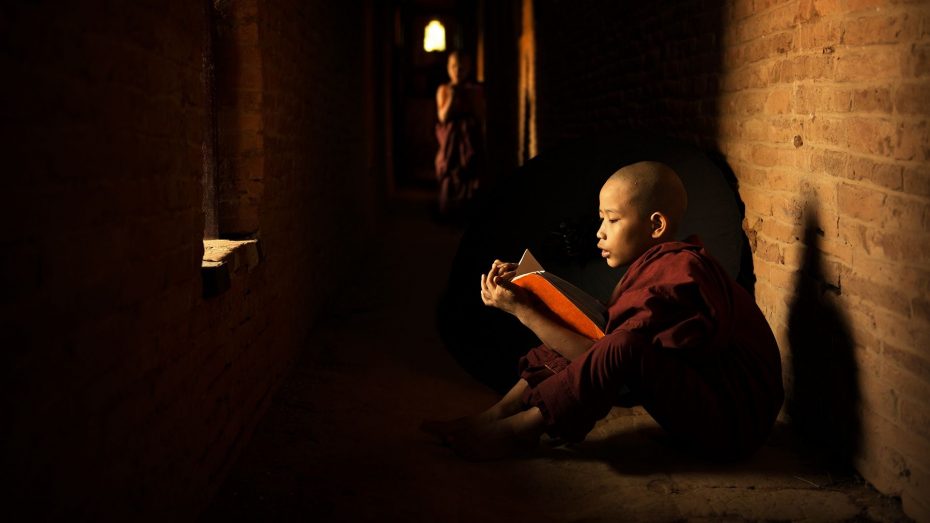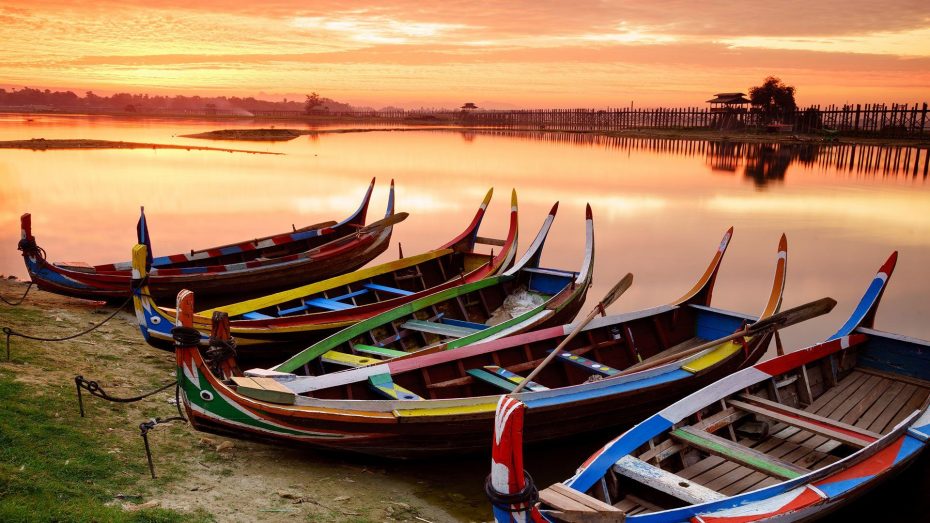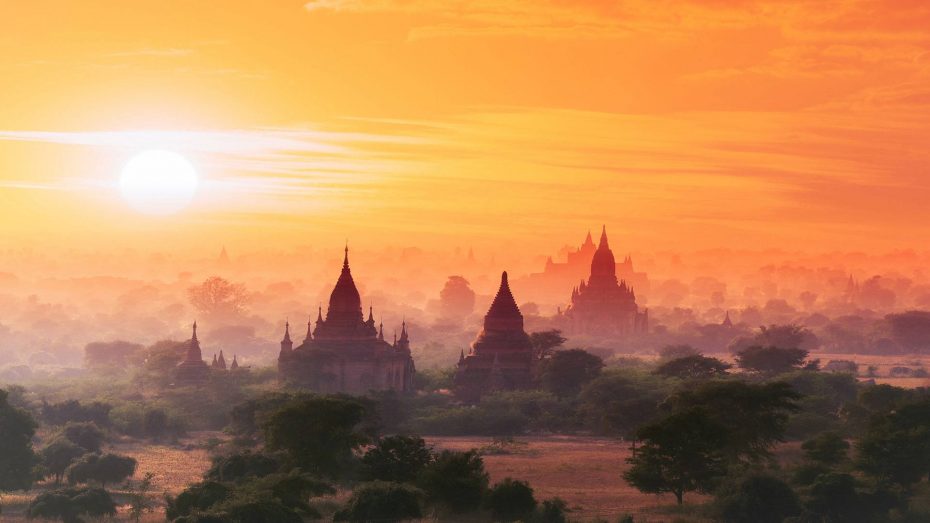The Best of Myanmar
12 Days
ABOUT THE ITINERARY
Myanmar (or Burma) is one of the most beautiful and untouched countries in Asia. This tour is designed so that you can experience the very best of this beautiful country at a relaxed pace which enables you to get under the surface of the country and its people, and also take time to relax and enjoy these special places. For this tour we carefully selected charming boutique accommodations for your rest and comfort while uncovering the most famous destinations and simultaneously the most remote villages, where you can have a first-hand experience of some of the most significant community based tourism experiments of the Country.
Our journey begins in Mandalay perhaps the most evocative of any destination in Myanmar (mainly due to the famous poem by Rudyard Kipling, who in fact only ever spent two days in the country and never came here!) – and yet it is a city whose significant charms need to be uncovered. From here the journey will continue with the exploration of some of the ancient capitals such as Amarapura, Innwa and Sagaing. Situated 11 kilometres south of Mandalay, Amarapura is one of Myanmar’s former capitals. It was built by King Bodawpaya in 1783 and served as the centre of power until 1857, when the capital moved to Mandalay. Here you will have a chance to walk on the unique U Bein Bridge, a beautiful 1.2 kilometre structure built from teak planks and said to be the longest of its type in the world. The bridge’s attraction is not simply in its structure, but that it remains a central part of the community, with hundreds of locals and saffron-robed monks walking their bicycles home along it, and fishermen going about their daily work in its shadow. In Sagaing, another of Myanmar’s ancient capitals, famous for its many hundreds of white, silver and gold pagodas and monasteries that dot its hilly landscape, you will have a unique opportunity to experience a meditation session in a traditional monastery so to have a deeper insight of Burmese religious tradition. The Journeys continues to Bagan. On the way you will visit a local village, an exciting community-based tourism initiative launched by an NGO. Here you will have multiple opportunities to experience the area’s beautiful ecosystem, participate in cultural exchanges, and experience village life.
After a boat ride on the Irrawaddy river Bagan is waiting for you with the finest collection of temples in Asia, and savouring the sunrise from the upper terrace of a temple is an experience not soon forgotten. The thousands of temples that are spread across the plains of Bagan (sometimes spelt Pagan) are the most impressive testament to the religious devotion of Myanmar’s people – and rulers – over the centuries. They combine to form one of the richest archaeological sites in Asia and provide views quite unlike anywhere else on earth. An internal flight will bring you from Bagan to western Shan State where you will find the serenely picturesque Inle Lake, famous for its floating villages, gardens and markets and the unique way of life of the Intha people, with their functioning communities based entirely on the water. In villages and towns across the lake, wooden houses are built high on stilts and fishermen steer their one-man boats with a unique rowing style, wrapping one leg around their oar. Along with fishing, traditional handicrafts are an important part of the local economy, and you will get to see silk weavers and silversmiths plying their trade on the lake.
With a gear boat you will continue Loikaw where you get off the beaten track and see the real culture and traditions of Myanmar. The remote and enchanting capital of Kayah, Myanmar’s smallest states, Loikaw is a long way from anywhere. The State was until recently off-limits to foreigners but the area is slowly opening up; it is home to a number of interesting rock formations with pagodas at their peaks, and the surrounding mountains are host to caves and opportunities for trekking. Travelling to this part of Myanmar you will discover beautiful Kayah hill scenery and a large number of distinctive tribal cultures, the most internationally famous of which are the Kayan, with their tradition of ‘giraffe-necked’ women with coils that elongate their necks. From Loikaw a direct flight will bring you to the capital of Yangon



SIGN UP FOR THE TRIP
Registration can be requested for group travel or for self-travel. For group travel, registration is not binding. Upon reaching the minimum number of members necessary for the formation of the group, usually 4 or 6 people, you will be asked for confirmation of booking and payment of a deposit.
JOURNEY OVERVIEW AND PROGRAM DETAILS
1° Day: arrival at Mandalay
Mandalay
Upon arrival to Mandalay Airport, you will be welcomed by our guide and transfer to the hotel for check-in. Mandalay was the final capital of then-Burma’s Konbaung Dynasty until its decline in 1885 at the hands of the British and is regarded today as Myanmar’s capital of culture. We will spend the day exploring the city’s sites with highlights including the Mahamuni Pagoda, the wood-carved Shwenandaw Monastery and the world’s largest book at Kuthodaw Pagoda. In the evening, enjoy yet another spectacular sunset from the top of Mandalay Hill.
Overnight in Mandalay
2° Day: meditation experience Sagaing
Amarapura – Ava – Sagaing
Today you will explore the ancient capitals close by to Mandalay. The first will be to the ancient royal capital of Amarapura. Here we will visit the Mahagandayon Monastery, a school for young monks, and U Bein Bridge, a more than 200 year old structure and the longest teakwood bridge in the world. We then continue to Sagaing, which was the capital of the Shan Kingdom in the 14th Century and briefly the capital in the 18th Century, as part of the Konbaung Dynasty. The town is located slightly downriver from Mandalay and has many interesting stupas scattered over Sagaing Hill. Transfer to “Sitagu Meditation Center”, where you will have the chance to experience a traditional Burmese meditation session. Later, you will visit another former royal capital, Ava, which was founded in 1364 and was the royal capital for nearly 400 years. Highlights here include the ‘leaning tower of Ava’, Maha Aungmye Bonzan Monastery, which was built by masonry as opposed to most other monasteries which are built with wood, and the elegant teakwood Bagaya Monastery.
Overnight in Mandalay (B)
3° Day: explore Shar Pin Kaing village
Mandalay – Pakokku – Bagan (boat)
After breakfast, you will drive to Pakokku, a charming town famous as a tobacco trading centre, famous for its weaving shops. You will visit Pakokku market and Thanakha wood market; local people use this wood to beautify face and protect from sun burnt. After exploring markets, drive to Shar Pin Kaing village (30 min). You have a lunch at Shar Pin Kaing village. Experience seasonal agriculture activities and visit homes to have tea and Burmese snacks made of rice, pea, beans and palm sugar. To document these experiences, one should not miss taking a camera. Leave this village for jetty on Bullock cart (20 min). Ride a boat to Bagan in Irrawaddy river with the sun setting and alongside islands for some time where no people are living but the birds and thatch growing. Upon arrival, you will be transferred to the Hotel.
Overnight in Bagan (B/L)
4° Day: visit Bagan
Bagan
After breakfast, you will enjoy a Bagan Archaeological. Tour will take you in famous sites including Damayarzaka Pagoda, Shwegugyi and Thabyinnyu. Other highlights include the mural paintings at Gubyukggyi and Abeyadana Temple, which is famed for its mural paintings about Mahayana Buddhism. In the afternoon you will visit a lacquer ware shop to learn about this unique art, which Bagan is famous for, is carried out before enjoying Bagan’s famous sunset from atop one of the temples.
Overnight in Bagan (B)
5° Day: lifestyle experience Kyaung Thiri village
Bagan – Kyun Thiri village – Bagan
After breakfast a boat ride across the Irrawaddy presents an opportunity to spend the morning with the monks and villagers of Kyun Thiri Island. You’ll pay a visit to the local monastery and spend the morning learning about the local daily lives. So you’ll get an opportunity to interact with the locals and support underprivileged children. Later you will return to Bagan by boat and visit to Shwezigone Pagoda, a prototype for many Myanmar stupas built later. You will then visit the 13th century cave temples at Wetkyi-in- Gubyaukgyi, one of Bagan’s most famous sites the Ananda Pagoda and many other temples dotted around this vast, beautiful complex. In the evening, you will enjoy sunset from Shwesandaw Pagoda, which offers the best views across the plain.
Overnight in Bagan (B)
6° Day: discover Pindaya
Bagan – Heho (flight) – Pindaya
After breakfast, transfer to the airport for your flight to Heho. Upon arrival, drive to Pindaya which is noted for its extensive limestone caves filled with Buddha images. Driving there we will pass through the Pa-O and Danu villages of Pwehla and Ji Chanzi and endless fields of dry cultivated mountain rice and potato. Inside the Pindaya Caves are nearly 8,000 Buddha images that have been built there over the centuries as a form of merit making. Made of various materials and of different sizes, the statues are carved into every space of the vast cave chambers.
Overnight in Pindaya (B)
7° Day: boat ride Inle lake
Pindaya – Inle lake
Begin the day with breakfast at the hotel before we take a sightseeing tour on a long-tail boat on Inle Lake, visiting silk weaving and lotus industries in Innpawkhine Village before stopping in Nanpan to witness work at a Cheroot (Myanmar Cigar) factory. You will continue our tour to see the Phaungdaw Oo Pagoda and, if we have time, stop at Leshae Village to witness the making of a Buddha image through the use of dried flour powder.
Overnight in Nyaung Shwe (B)
8° Day: learn cooking Inle lake
Inle lake – Indein – Inle
It’s the Intha people that have tamed this lake, their perfect precision with canoes and fishing nets inform their lifestyle on the water. Today you are invited into their stilt village to cook, but before the fragrant smells waft across the lake, you will need ingredients. You will take a boat to the rotating lakeshore market, where wooden tables are packed with mountains of spices and vegetables. Atmospheric calls merge with the steam from tea stalls as you collect your colourful produce. Prepare a series of dishes in the stilt house as you occasionally gaze out the window onto the open lake view. You will take their recipes away with them as well as an apron and a cap to commemorate the day. After lunch, we travel to Indein to observe a 17th century Pagoda complex and pay a visit to many of the small communities alongside the lake’s edge. On the way, we will see some of the lake’s famous floating gardens and visit a number of souvenir shops.
Overnight in Nyaung Shwe (B/L)
9° Day: discover tribal village Hta Nee La Let
Inle – Phekhone (boat) – Loikaw
In the morning you will take a scenic and off-the-beaten track trip south to Phekhone by boat (5 hours). On the way you will visit Sagar village. Transfer by car to Loikaw in Kayan state. Upon arrival, you will drive one of the most famous village for the distinctive ‘long-necked’ women of the Kayan tribes. The village is considered as one of the best established Community-Based Tourism programs in Myanmar, with a number of different village visit and trekking options. There are several fascinating occasions to have interesting insights into local life and culture, and activities were developed based on special elements of local life which community members feel proud and comfortable to share with guests. You will have the chance to visit also the “Hta Nee La Leh ‘Kayhtoebo” hall and shrines, where animist traditions are practiced. Guests learn why the site is important for the local community, and about festivals and ancient hunting traditions and rituals. You can even try your hand using a catapult.
Overnight in Loikaw (B)
10° Day: short trekking Pan Pet village
Loikaw
There are many rural villages in Loikaw and we’ll visit one of the Padaung/Kayan ethnic villages, Pan Pet which is just 20 miles away from the town. Most women from that village have followed their traditional culture of wearing neck rings. Girls first start to wear brass neck coils at age of five but young generations seem not to want to continue with this tradition anymore. Over the years the coil is replaced by a longer one with more turns. The neck itself is not lengthened the weight of the brass pushes the collar bone down and compress the rib cage. All houses in the village are made of wood and bamboo. In the main room they all have corn hung from the ceiling just above the fireplace. This is the corn they will use to plant and grow. The reason for placing them there is to prevent birds from eating the corn seeds once they plant them. The smoked corn seeds will not attract them. Travel to Pemsong hamlet, to enjoy a moderately challenging trek, through lush, shady, forest. After a short climb, guests enjoy over 3 hours of continual, great views. En route, local guides will show guests various edible plants and herbal medicines which are used by community members in their “jungle larder”. A highlight of the trip is arriving at the original settlement of Pan Pet, perched on a mountain top, where evidence of past habitation is visible. This is considered one of the first Kayan settlements of Kayah state. Guests also enjoy a jungle picnic. The trek ends in Rang Ku hamlet, where guests can meet the famous Kayan people (popularly known as Long Neck Karen), who are a symbol of Kayah state. Enjoy learning a few words of Kayan language and interacting with these fun-loving and artistic people. There are also opportunities to buy local handicrafts.
Overnight in Loikaw (B/L)
11° Day: visit Yangoon
Loikaw – Yangon (flight)
After breakfast, we will transfer to the airport for your flight to Yangon. Upon arrival, you will be transfered to the hotel. You will have the chance to visit the world famous Shwedagon Pagoda, which towers over the city and is the most highly-revered religious structure in the country. It is a sight that no visitor to Myanmar should miss.
Overnight in Yangon (B)
12° Day: Depart from Yangoon
Yangon
Transfer to the airport to take your flight back home.
ACTIVITIES
- Enjoy a spectacular sunset from the top of Mandalay Hill,
- visit the beautiful wood-carved Shwenandaw Monastery in Mandalay,
- see the world’s largest book at Kuthodaw Pagoda,
- walk on the longest teakwood bridge in the world,U Bein Bridge, a more than 200 year old structure,
- discover the ancient capital of the Konbaung dynasty, Amarapura,
- experience a traditional Burmese meditation session at Sitagu Meditation Center,
- visit the ‘leaning tower of Ava’ in Innwa,
- explore the traditional Pakokku and Thanakha wood markets,
- learn from one of the best community based project in Myanmar in the village of Shar Pin Kaing,
- float down the Ayeyarwaddy river from to Bagan,
- get surprise by a sightseeing tour of one of Asia’s best-known archaeological sites, the Bagan temples,
- witness one of the most beautiful sunsets from atop a pagoda in Bagan,
- enjoy with the monks and villagers of Kyun Thiri Island,
- discover Pindaya, famous for its extensive limestone caves filled with Buddha images,
- enjoy boat ride along the river to the Inle Lake,
- visit Nga Phae Caung monastery to see the floating gardens,
- learn traditional Myanmar cooking,
- discover the Intha people and their lifestyle on the water in Indein and nearby villages,
- enjoy a scenic and off-the-beaten track boat ride to Phekhone,/li>
- witness traditional weaving technique by local Padaung women, the traditional “long necked” women,
- visit various tribal villages and interact with the very friendly and hospitable local tribes,
- visit the “Hta Nee La Leh ‘Kayhtoebo” hall and shrines, where animist traditions are still practiced,
- discover various edible plants and herbal medicines during a small trekking with your tribal guides,
- buy local handicrafts made by tribals in their villages,
- enjoy an unforgettable sunset at the famous Shwedagon Pagoda in Yangon,
- explore the cultural and ecological richness of Burma.
SOCIAL AND ENVIRONMENTAL IMPACT
This itinerary has been designed in order to promote direct or indirect benefits for local communities, environment and cultural heritages. We have carefully selected accommodation for both your comfort and for their sensible approach to social and environmental issues, following general principles and practices of responsible tourism. Whilst enjoying the fabulous landscapes and temples of Burma, you will also have opportunities to meet with rural Burmese people and support them whether by buying their artefacts or donating to their schools. When travelling in Myanmar, the best way to ensure your money reaches the people is to support local communities – buy local products and eat where locals eat. Some of the ills that Myanmar still faces happen in the background or out the of view of tourists – but as you travel around the country, you may find that you are confronted with issues such as child labour, the insensitive renovation (or even destruction) of historical structures, and unpleasant, uncollected litter. Whilst always remaining polite and sensitive to the Asian concept of ‘saving face’, you should feel free to raise these concerns with locals, particularly those in authority. In the long term, it can make a difference. It is important to be aware that entrance fees, which are paid in US dollars and are charged when entering many popular destinations such as Bagan and Inle Lake, go to the government. Some say that this is absolutely a bad thing, but in today’s environment of change, the truth is more nuanced; the government of Myanmar is far from perfect, but it is now actively seeking advice from NGOs and European governments on responsible tourism and development.
During this tour you will have the chance to get off the tourist track and enjoy a uniquely local experience at Shar Pin Kaing village outside the famous tobacco town of Pakokku. This is initiative is part of an innovative ActionAid project promoting community-based accommodation in the area, with meals and activities provided by local villagers. Pakokku township is just a 30 minute drive from Bagan, yet it experiences virtually none of the benefits of the burgeoning tourism industry. Job opportunities are limited in Pokakku, and severe poverty is common. Most villagers work as farmers and unskilled labourers, and it is common for youth and working-age adults to migrate elsewhere within Myanmar or abroad in search of work. The overall goal of the project is to establish a tourism destination in Pokakku township that is minimally disruptive to the local environment and existing way of life in local communities, but also allows for increased economic opportunities in a manner that is sustainable, community driven, and implemented in a manner that benefits the wider community as a whole. During you visit in Bagan you will have the opportunity to spend a morning with the monks and villagers of Kyun Thiri Island. You’ll pay a visit to the local monastery and spend the morning learning about the local daily lives. So you’ll get the chance to interact with the locals and support underprivileged children. In Inle lake you are invited into Intha stilt village to learn about their culture through a cooking experience. For a more immersive experience, and to really get a taste of the life of the Padaung/Kayan ethnic groups, you will have the chance of a two-days tribal villages exposure hike. Local guides will benefit from the tour, giving them a source of income and at the same time giving you a real and authentic taste of Burmese tribal culture; local guides will show guests various edible plants and herbal medicines which are used by community members in their “jungle larder”. In Yangon you will have the possibility to support Pomelo’s initiative through responsible shopping. Pomelo’s mission is to work with marginalized producers, small family businesses, community groups and individuals in Myanmar providing them with a fair trade market place that targets tourists and international customers, opening opportunities for them to improve their social and economic situation. Its aim is benefiting those who find it difficult to sell into the international market and to trade responsibly and profitably when they do. Rather than creating dependency on aid, they use a market-based approach that empowers producers to get a fair price for their work.
Moreover, your contribution of 50 euros will support education scholarship in favour of one of the most marginalised communities of Myanmar; in particular, 50 euros will go for the support of Kayan children of a village school located near the city of Loikaw.
TIPS BEFORE DEPARTURE
As with all countries, Myanmar has its own set of unique cultural traditions and idiosyncrasies. Some of these are fascinating, some require sensitivity and some require the visitor to adjust. Therefore, it is advised that you following carefully a code conduct which respects local culture to avoid any hassles or unwanted troubles along your journey. Buddhism is at the heart of Myanmar culture and it permeates private and public life. Most young people spend time in monastic education, and monks and nuns hold a revered place in society: they should not be touched; they always sit at the highest place available (for example at a table or on a bus – which often means on the roof); and they hold privileges such as the freedom of first class travel on public transport, sometimes with their own reserved places. Couples should avoid public displays of affection, such as hugging, kissing etc., as this behaviour is not appreciated by local people. Shoes and socks should be removed before entering any shrine, pagoda or monastery. It is also customary to remove shoes before entering private homes and many offices. The head and feet are important in Myanmar culture, as the highest and lowest points of the body. No one, including children, should be touched on the head. Feet should never be put on tables or used for touching or pointing. Myanmar women should not in general be touched by men. If a woman wishes to shake hands, she will offer her hand first.
You are also advised to follow a certain dress code. There are basically two reasons why it is recommended to be careful about what clothes you wear while traveling to Myanmar. The first reason is to prevent you from hurting the sentiments of the local people. Revealing clothing is sometimes frowned upon, although it is increasingly common amongst Myanmar women. But at religious sites, legs and shoulders should always be covered. Second is to protect you from the varied weather conditions prevailing in seasons. Though it may be hot and humid, your best protection against insects and thorny plants and vines is long sleeves and pants. With generally high temperatures in the popular locations around the country, lightweight cotton and linen clothing is recommended for most of the year; warmer clothes may be needed for the evenings, which can sometimes be cool. Even outside the rainy season there can on occasion be downpours, so it is advisable to pack a light raincoat. Travelling to higher altitudes and further north, it is advisable to take warmer clothes, particularly in the cool season, when temperatures can drop significantly. It is also advised to keep your arms and legs covered because it provides protection (however, don’t forget to bring with you mosquito nets and repellents, especially for cruises and trekking in the forest). During trekking wear comfortable shoes.
The US dollar is widely used as an alternative currency, particularly for larger purchases; foreigners are sometimes expected to pay in dollars for hotels, flights and access to historical sites. If payment is made in kyat for these transactions, it may sometimes be at a worse rate. When paying in dollars, change will often be given in kyat. Smaller purchases, such as taxi rides, buses and meals are quoted and are almost always paid for in kyat (although some high-end hotels and restaurants quote meal prices in dollars). You should expect to exchange roughly half the money you take to Myanmar into kyat. While you are spending few days outside the main cities, make sure to exchange enough money beforehand; it can be difficult to change money outside the main cities, and you will probably get a worse rate. ATMs are also more difficult to find in these areas (see more information below). US dollar bills taken to Myanmar must be in PERFECT CONDITION! Dollar bills should be brought to Myanmar in differing denominations: take plenty of $10, $5 and $1 bills to pay for historical sites, and take $100 or $50 bills for exchanging to kyat (larger denominations sometimes get a better rate). Traveller’s cheques are not generally accepted in Myanmar.
It is advised that you get onto India’s time zone as soon as you leave home and try to eat and sleep on Indian time. Also, if you reach Myanmar early in the day, try to stay awake – this will help the body’s internal clock to reset
HOTELS
We selected beautiful heritage resorts with good facilities throughout the tour.
TRANSPORT
Private AC vehicles, mini coaches according to the number of participants throughout the tour.Two internal flights from Bagan to Heho and from Loikaw to Yangon. From Shar Pin Kaing village to Bagan you will take a boat on the Ayeyarwaddy river for a cruise and from Inle to Phekhone will be take a boat along the lake (5 hours).
WHEN TO GO
Myanmar has a tropical climate, with the southwest monsoon bringing rain from May to October. Roads can become impassable, particularly from July to September. From October onwards the rains subside; the best time to visit most of Myanmar is from November to March, when temperatures are relatively manageable. From March to May, the country becomes very hot, particularly the dry zone of the central plains where Bagan and Mandalay often see temperatures in excess of 40°C.

